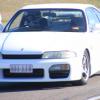I Think I've Messed Up My Timing Belt Change
Announcements
-
Similar Content
-
Latest Posts
-
Let's be honest, most of the people designing parts like the above, aren't engineers. Sometimes they come from disciplines that gives them more qualitative feel for design than quantitive, however, plenty of them have just picked up a license to Fusion and started making things. And that's the honest part about the majority of these guys making parts like that, they don't have huge R&D teams and heaps of time or experience working out the numbers on it. Shit, most smaller teams that do have real engineers still roll with "yeah, it should be okay, and does the job, let's make them and just see"... The smaller guys like KiwiCNC, aren't the likes of Bosch etc with proper engineering procedures, and oversights, and sign off. As such, it's why they can produce a product to market a lot quicker, but it always comes back to, question it all. I'm still not a fan of that bolt on piece. Why not just machine it all in one go? With the right design it's possible. The only reason I can see is if they want different heights/length for the tie rod to bolt to. And if they have the cncs themselves,they can easily offer that exact feature, and just machine it all in one go.
-
This is how I last did this when I had a master cylinder fail and introduce air. Bleed before first stage, go oh shit through first stage, bleed at end of first stage, go oh shit through second stage, bleed at end of second stage, go oh shit through third stage, bleed at end of third stage, go oh shit through fourth stage, bleed at lunch, go oh shit through fifth stage, bleed at end of fifth stage, go oh shit through sixth stage....you get the idea. It did come good in the end. My Topdon scan tool can bleed the HY51 and V37, but it doesn't have a consult connector and I don't have an R34 to check that on. I think finding a tool in an Australian workshop other than Nissan that can bleed an R34 will be like rocking horse poo. No way will a generic ODB tool do it.
-
Hmm. Perhaps not the same engineers. The OE Nissan engineers did not forsee a future with spacers pushing the tie rod force application further away from the steering arm and creating that torque. The failures are happening since the advent of those things, and some 30 years after they designed the uprights. So latent casting deficiencies, 30+ yrs of wear and tear, + unexpected usage could quite easily = unforeseen failure. Meanwhile, the engineers who are designing the billet CNC or fabricated uprights are also designing, for the same parts makers, the correction tie rod ends. And they are designing and building these with motorsport (or, at the very least, the meth addled antics of drifters) in mind. So I would hope (in fact, I would expect) that their design work included the offset of that steering force. Doesn't mean that it is not totally valid to ask the question of them, before committing $$.
-
The downside of this is when you try to track the car, as soon as you hit ABS you get introduced to a unbled system. I want to avoid this. I do not want to bleed/flush/jack up the car twice just to bleed the f**kin car.
-






Recommended Posts
Create an account or sign in to comment
You need to be a member in order to leave a comment
Create an account
Sign up for a new account in our community. It's easy!
Register a new accountSign in
Already have an account? Sign in here.
Sign In Now